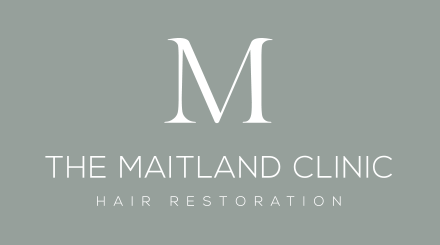Dr Bicer’s Consultant
Valued member
Hello everyone,
The hairline frames our face; it has such a large impact on how we look. Hairline position and design changes with ethnicity and genetics. However, there are some fundamentals that need to be followed to create a natural hairline. If any of the fundamentals are not followed it´s likely to result in an unnatural look.
Aspects such as -
Wrong Angles
Wrong Direction
Low Density
Wrong Placement
We will look at hair angles and direction/orientation, this can become complex when trying to recreate a cowslick hairline, as a result it´s not commonly tried. When placing the new hair at the correct angle and orientation is important to mimic a natural hairline, especially when there is surrounding native hair as they need to blend seamlessly. But even if there is no native hair, the natural parameters must be followed, with some leeway but not much.
A natural hairline hair angle is typically between 10° and 20°, as the hairline moves from the apex (middle of the hairline) to the temple the angle changes and becomes flatter. With the angles near the temple point around 3° - 5°. This varies with ethnicity, genetics and hair characteristics. The hair direction, the central hairline, most men's hair grows forward, toward the face, which provides natural lift when combed back off the face. Whereas male temple hair generally grows in a down and back direction. The direction and angles of hair growth changes behind the hairline around the head, such as higher hair angles and spiral direction of a crown.
If a doctor tries to buck the natural parameters an unnatural hairline will be created. Not only will it look unnatural it will greatly inhibit styling. Having hair growth growing "straight up" or in completely wrong directions such as growing backward at the frontal hairline, or perpendicular in the temple area is hard to camouflage. Being able to naturally style your hair is a fundamental consideration to creating a natural looking hair transplant. When the hair direction and angles are off it makes combing and styling harder, often having to use strong fixing sprays to keep the hair in constant position.
Fixing poor graft angles and direction needs to be performed by an experienced hair transplant repair doctor, it is time-consuming and can require multiple sessions. In some cases, more hair can be added with correct placement around the poorly placed hair. This can help to camouflage the bad hair grafts as they blend or get lost in the higher density with the new hair units, although it´s likely to still be problematic with some styling. If this is not a viable option, then the incorrectly placed grafts can be removed using a FUE punch, and if still intact re-implanted. A repair is not a good place to find yourself in, takes up more time, the inconvenience of it all, more money and in general can affect your well-being.
Often wrong angles and direction is accompanied with more issues that we´ll cover later. Unfortunately today, it is still possible to see too many poor hairlines. The lack of consideration to these aesthetic fundamentals shows incompetents on behalf of a doctor and demonstrates a total lack of care and understanding of anatomy and natural traits. Dr Bicer is a firm believer in informing her patients, allowing them to understand the pros and cons to hair restoration and that everyone´s plan is personal to them.
The hairline frames our face; it has such a large impact on how we look. Hairline position and design changes with ethnicity and genetics. However, there are some fundamentals that need to be followed to create a natural hairline. If any of the fundamentals are not followed it´s likely to result in an unnatural look.
Aspects such as -
Wrong Angles
Wrong Direction
Low Density
Wrong Placement
We will look at hair angles and direction/orientation, this can become complex when trying to recreate a cowslick hairline, as a result it´s not commonly tried. When placing the new hair at the correct angle and orientation is important to mimic a natural hairline, especially when there is surrounding native hair as they need to blend seamlessly. But even if there is no native hair, the natural parameters must be followed, with some leeway but not much.
A natural hairline hair angle is typically between 10° and 20°, as the hairline moves from the apex (middle of the hairline) to the temple the angle changes and becomes flatter. With the angles near the temple point around 3° - 5°. This varies with ethnicity, genetics and hair characteristics. The hair direction, the central hairline, most men's hair grows forward, toward the face, which provides natural lift when combed back off the face. Whereas male temple hair generally grows in a down and back direction. The direction and angles of hair growth changes behind the hairline around the head, such as higher hair angles and spiral direction of a crown.
If a doctor tries to buck the natural parameters an unnatural hairline will be created. Not only will it look unnatural it will greatly inhibit styling. Having hair growth growing "straight up" or in completely wrong directions such as growing backward at the frontal hairline, or perpendicular in the temple area is hard to camouflage. Being able to naturally style your hair is a fundamental consideration to creating a natural looking hair transplant. When the hair direction and angles are off it makes combing and styling harder, often having to use strong fixing sprays to keep the hair in constant position.
Fixing poor graft angles and direction needs to be performed by an experienced hair transplant repair doctor, it is time-consuming and can require multiple sessions. In some cases, more hair can be added with correct placement around the poorly placed hair. This can help to camouflage the bad hair grafts as they blend or get lost in the higher density with the new hair units, although it´s likely to still be problematic with some styling. If this is not a viable option, then the incorrectly placed grafts can be removed using a FUE punch, and if still intact re-implanted. A repair is not a good place to find yourself in, takes up more time, the inconvenience of it all, more money and in general can affect your well-being.
Often wrong angles and direction is accompanied with more issues that we´ll cover later. Unfortunately today, it is still possible to see too many poor hairlines. The lack of consideration to these aesthetic fundamentals shows incompetents on behalf of a doctor and demonstrates a total lack of care and understanding of anatomy and natural traits. Dr Bicer is a firm believer in informing her patients, allowing them to understand the pros and cons to hair restoration and that everyone´s plan is personal to them.

























